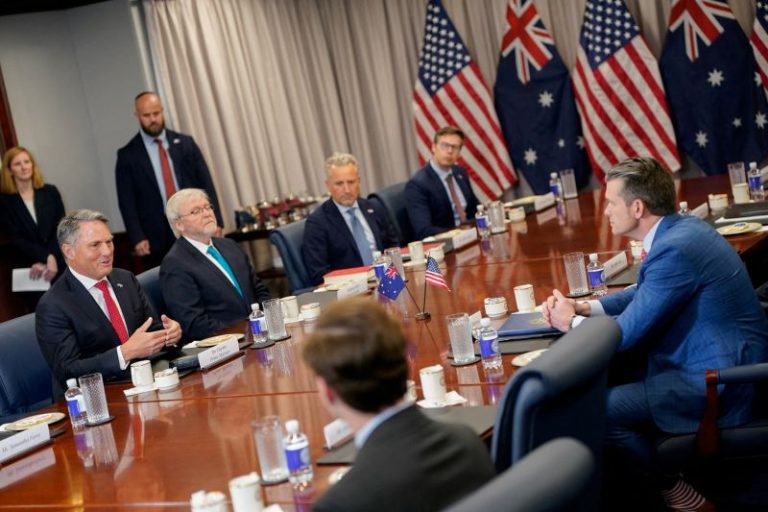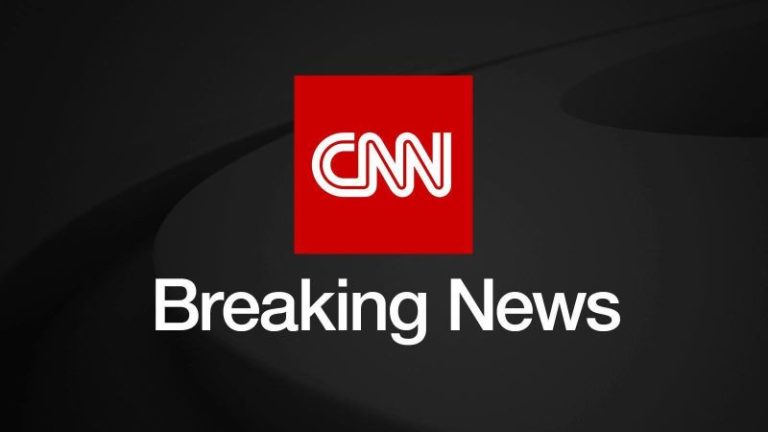US President Donald Trump’s administration has launched a formal review of former President Joe Biden’s AUKUS defense pact with Australia and Britain to allow Australia to acquire nuclear-powered submarines, a US defense official said.
Australia, which sees the submarines as critical to its own defense as tensions grow over China’s expansive military buildup, said it remained committed to the project and looked forward to working closely with the US on the review.
As well as causing alarm in Australia, the review could also throw a wrench in Britain’s defense planning. AUKUS, worth hundreds of billions of dollars, is at the center of a planned expansion of Britain’s submarine fleet.
“We are reviewing AUKUS as part of ensuring that this initiative of the previous administration is aligned with the President’s America First agenda,” the US official said of the review, first reported by Financial Times.
“Any changes to the administration’s approach for AUKUS will be communicated through official channels, when appropriate.”
AUKUS was formed in 2021 to address worries about China’s growing power.
It envisages Australia acquiring up to five US Virginia-class submarines from 2032. Then, Britain and Australia would design and build a new class of submarine, with US assistance. The UK would take first delivery in the late 2030s, with delivery to Australia in the early 2040s.
Before that, the US and Britain would start forward rotations of their submarines in 2027 out of an Australian naval base in Western Australia.
Vocal skeptics among Trump’s senior policy officials include Elbridge Colby, the Pentagon’s top policy adviser, who cautioned last year that submarines were a scarce, critical commodity, and US industry could not produce enough to meet American demand.
Submarines would be central to US military strategy in any confrontation with China centered in the First Island Chain, running from Japan through Taiwan, the Philippines and on to Borneo, enclosing China’s coastal seas.
“My concern is why are we giving away this crown jewel asset when we most need it,” Colby said last year.
Only six countries operate nuclear-powered submarines: the US, the UK, Russia, China, France and India.
A spokesperson for Australia Defense Minister Richard Marles said the US had informed Australia and the UK of the review.
“AUKUS will grow both US and Australian defense industry as well as generating thousands of new manufacturing jobs,” the spokesperson said.
A British government spokesperson called AUKUS “one of the most strategically important partnerships in decades” that also produces “jobs and economic growth in communities across all three nations.”
“It is understandable that a new administration would want to review its approach to such a major partnership, just as the UK did last year,” the official said, adding that Britain will “continue to work closely with the US and Australia … to maximize the benefits and opportunities” of AUKUS.
The White House did not immediately respond to a request for comment, but one official told Reuters the Trump administration “is regularly reviewing foreign agreements to ensure they align with the American people’s interests – especially those initiated under the failed Biden foreign policy agenda.”
US Senator Tim Kaine, a Democrat on the Senate Armed Services Committee, said AUKUS was “critical to ensuring a free and open Indo-Pacific” and the administration should work to strengthen it and the US submarine industrial base.
“Anything less would play directly into China’s hand,” said Kaine, who represents Virginia, where US submarines are built.
AUKUS is Australia’s biggest-ever defense project, with Canberra committing to spend A$368 billion ($240 billion) over three decades to the program, which includes billions of dollars of investment in the U.S. production base.
On Tuesday, Britain announced plans to invest billions of pounds to upgrade its submarine industry, including at BAE Systems in Barrow and Rolls-Royce Submarines in Derby, to boost submarine production as announced in Britain’s Strategic Defence Review. Under this, it will build up to 12 next-generation attack submarines of the model intended to be jointly developed by the UK, US and Australia under AUKUS.
In the US Congress on Tuesday, Defense Secretary Pete Hegseth said “we’re having honest conversations with our allies” and added in reference to Australia: “We want to make sure those capabilities are part of how they use them with their submarines, but also how they integrate with us as allies.”
Former Australian Prime Minister Malcolm Turnbull, who signed a previous agreement to acquire French submarines shelved in favor of AUKUS, told CNBC last week it was “more likely than not that Australia will not end up with any submarines at all, but instead, simply provide a large base in Western Australia for the American Navy and maintenance facilities there.”
AUKUS expert John Lee at Washington’s conservative Hudson Institute think tank said the Pentagon review was aimed at determining whether it could afford to sell up to five submarines when it was not meeting its own production targets.
Kathryn Paik, a Biden White House official now at Washington’s Center for Strategic and International Studies, said providing submarines to Australia would not sacrifice US readiness but instead boost collective deterrence.
“This review most definitely makes our allies in Canberra and London concerned, and could cause them to doubt US reliability as an ally and partner,” she said.
This post appeared first on cnn.com










